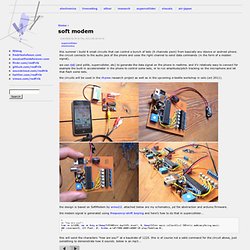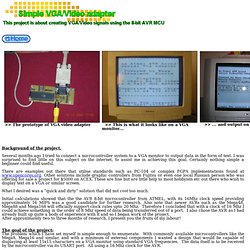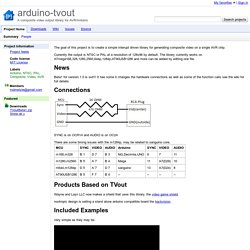

f0blog - Vimperator. This summer i build 8 small circuits that can control a bunch of leds (6 channels pwm) from basically any idevice or android phone. the circuit connects to the audio jack of the phone and uses the right channel to send data commands (in the form of a modem signal). we use rjdj (and pdlib, supercollider, etc) to generate the data signal on the phone in realtime. and it's relatively easy to connect for example the built-in accelerometer in the phone to control some leds, or to run amplitude/pitch tracking on the microphone and let that flash some leds. the circuits will be used in the rhyme research project as well as in the upcoming e-textile workshop in oslo (oct 2011). the design is based on SoftModem by arms22. attached below are my schematics, pd fsk abstraction and arduino firmware. the modem signal is generated using frequency-shift keying and here's how to do that in supercollider... ( c= "how are you?

" this will send the characters "how are you? " Dangerous Prototypes · First 32bit Arduino avalable soon - Vimperator. Digilent is soon to be launching two Arduino compatible platforms, the Uno32(pictured above)and the Max32. based on microchip‘s pic32mx micro controllers.

Following the Arduino philosophy of easy to use software and hardware, and not to mention the support structure already in place. they are both compatibly with existing shields. The Arduino IDE has been rewritten, and used the GNU C Compiler. and are also programmable with the pickit3. Peripherals including USB otg, can, Ethernet MAC, 16 and 32bit counters,timers, with 128K/512K program space, 16k/128K ram.
Capable of 80Mhz and 1.5DMIPS these are four times as powerful as the AVR based Arduinos. The hardware is open source, and uses the same existing high level libraries as previous Arduinos, allowing someone without any pic32 experience to start using these powerful processors. Check them out at the MakerFair Microchip Booth. Video in GCC - Vimperator. Cornell University Electrical Engineering 476 Video Generation with Atmel Mega644 and GCC Introduction A television (TV) monitor is a good example of a device which needs hard-realtime control.

The TV is controlled by periodic synchronization (sync) pulses. If a sync pulse is late, the TV picture quality suffers. So a late calculation is worth nothing. Small TV monitors also seem to be one of the cheapest graphics devices you can buy, include audio amplifiers and speakers, and are designed to be almost bullet-proof. Video Generation There are several very good references for understanding how TVs are controlled by a pulse sequence. The goal is to generate non-interlaced, black and white video, with enough image content to be interesting as a graphics device. Video DAC Two bits of a port are used to generate three video levels: Sync level = 0 volts Black level = 0.3 White level = 1.0. Simple VGA/Video adapter with ATmega AVR - Vimperator. Background of the project.

Several months ago I tried to connect a microcontroller system to a VGA monitor to output data in the form of text. I was surprised to find little on this subject on the internet, to assist me in achieving this goal. Certainly nothing simple a beginner could find useful. There are examples out there that utilise standards such as PC-104 or complex FGPA implementations found at www.opencores.org. Other solutions include graphic controllers from Fujitsu or even one local Russian person who was offering for sale a project for $5000 on ACEX.
What I desired was a “quick and dirty” solution that did not cost too much. Initial calculations showed that the the AVR 8-bit microcontroller from ATMEL, with its 16Mhz clock speed providing approximately 16 MIPS was a good candidate for further research. After approximately two to three months of research, I present you the fruits of my labour! Arduino-tvout - A composite video output library for AVR/Arduino - Google Project Hosting - Vimperator. The goal of this project is to create a simple interupt driven library for generating composite video on a single AVR chip.

Currently the output is NTSC or PAL at a resolution of 128x96 by default. The library currently works on ATmega168,328,1280,2560,644p,1284p,AT90USB1286 and more can be added by editing one file. Beta1 for version 1.0 is out!!! It has some it changes the hardware connections as well as some of the function calls see the wiki for full details. SYNC is on OCR1A and AUDIO is on OC2A There are some timing issues with the m1284p, may be related to sanguino core. Wayne and Layn LLC now makes a shield that uses this library, the video game shield. nootropic design is selling a stand alone arduino compatible board the hackvision.
Very simple as they may be. Video Experimenter - Vimperator.